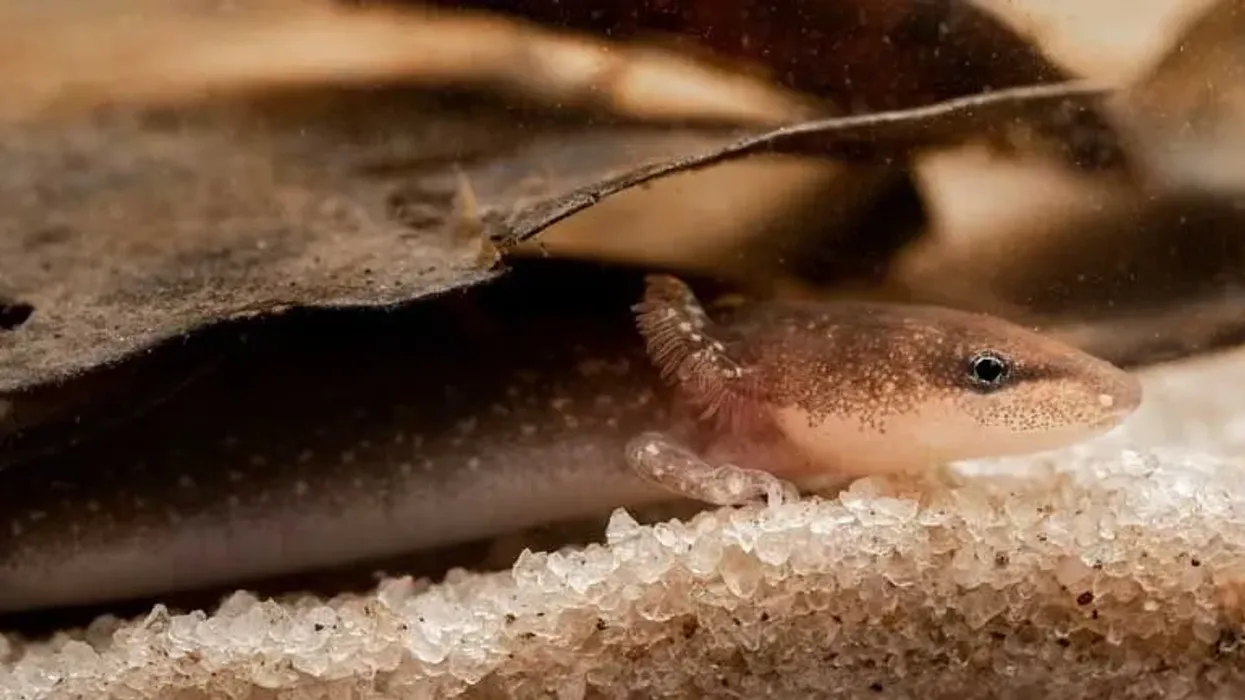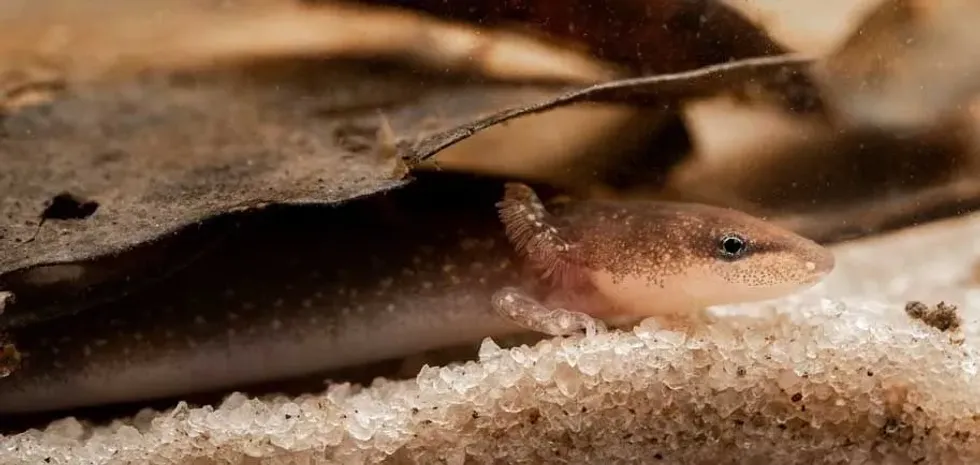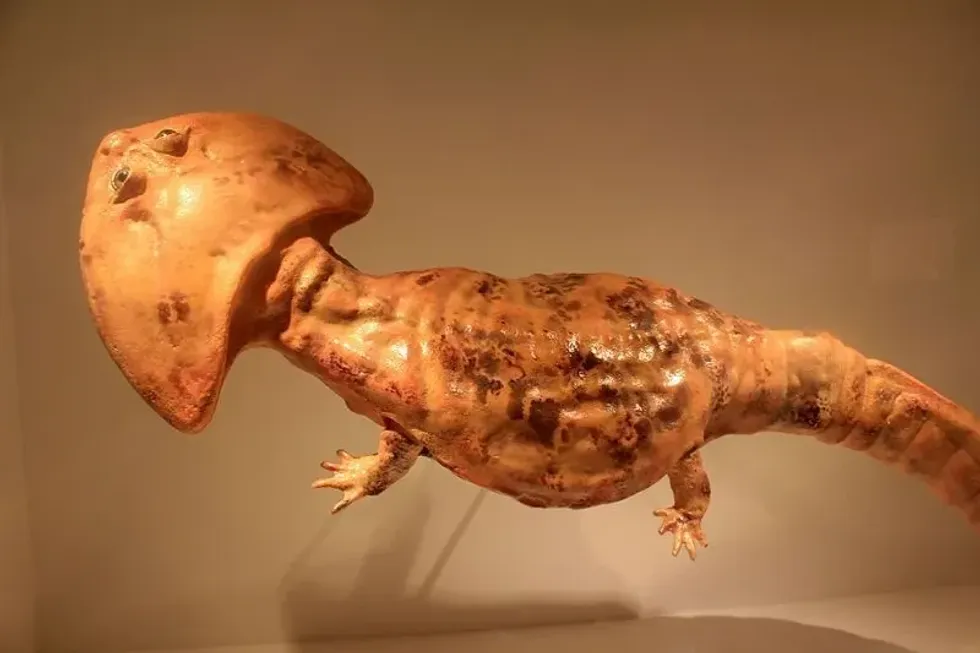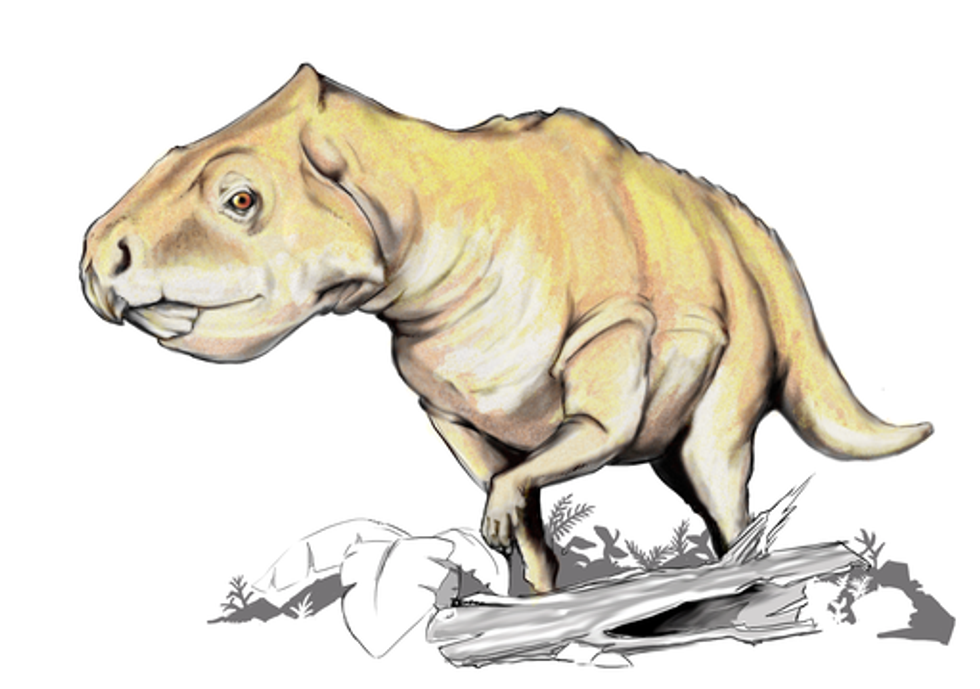You might have seen lizards and even might be scared of them. The dwarf waterdog (Necturus punctatus) is a species that is somewhat similar to lizards and looks very gross in appearance. Anyone might get scared when they look at dwarf waterdogs (Necturus punctatus) from the genus Necturus.
It is usually long in length and has gills that are very narrow and bushy and a tail that is compressed. The best resource for information on this species is Meffe, G., A. Sheldon.
1987. Habitat Use by Dwarf Waterdogs (Necturus punctatus) in South Carolina Streams, with Life History Notes. Herpetologica 43 (4): 490-496.
The feet of dwarf waterdogs (Necturus punctatus) comprise four toes and are usually slate gray to brown in color. The individuals do not have dorsal spots.
Dwarf waterdogs (Necturus punctatus) are found in different parts of the world and migrate according to changes in weather conditions. If you want to know more about amphibians and reptiles, you may also look at our articles about Texas blind salamander and green salamander.
Dwarf Waterdog Interesting Facts
What type of animal is a dwarf waterdog?
Dwarf waterdog (Necturus punctatus) is a type of amphibian which is associated with the freshwater habitat. These aquatic salamanders are the smallest waterdogs in the family, even smaller than the related Neuse River waterdog and mudpuppy. N. punctatus is an aquatic salamander that is found in different parts of the world and prefers habitat according to their body temperature.
What class of animal does a dwarf waterdog belong to?
Necturus punctatus (dwarf waterdog) belongs to the class of amphibians, like the Neuse River waterdog, as this species inhabits different habitats. The detailed information about N. punctatus can be found in Sherman, C. 1943. A Handbook of Salamanders: The Salamanders of the United States, of Canada and of Lower California, published by Ithaca, New York: Comstock Publishing Company.
How many dwarf waterdogs are there in the world?
There is no specific number as to how many dwarf waterdogs are there in the world. The number of dwarf waterdogs keeps changing according to the change in the climate.
The population range keeps changing with a change in the deaths and births of dwarf waterdogs. Therefore, the number of dwarf waterdogs keeps changing accordingly based on different factors.
They occur in their habitat range of Coast Plain from southeastern Virginia to south-central Georgia, and also enters the Fall Line and Piedmont from North Carolina to Georgia. Their conservation status has been listed as Least Concern at present.
Where does a dwarf waterdog live?
Dwarf waterdogs live in a different range of habitats according to their body type. The dwarf waterdogs live in streams that are slow and sluggish and also in swamps. Their habitat range also extends to flooded fields and irrigation ditches. They are also said to be found in cypress swamps, rice fields, and also in mill ponds.
What is a dwarf waterdog's habitat?
The dwarf waterdog’s habitat range includes streams that are slow and sluggish and also in swamps. They are also found across the length and breadth of the flooded fields and irrigation ditches. The habitat range is also said to be found in cypress swamps, rice fields, and also in mill ponds.
Who do dwarf waterdogs live with?
Dwarf waterdogs usually prefer to live alone rather than staying in groups or in colonies. Dwarf waterdogs only come together during their mating season. It is present in south-central Virginia in the Coastal Plain and the eastern edge of Piedmont.
How long does a dwarf waterdog live?
According to the researchers at the University of California, Berkeley, dwarf waterdogs lifespan range is about 10 years. Some of them live for a longer period of time whereas some of them live for a short period of time which is based on certain factors.
How do they reproduce?
The breeding season of the dwarf waterdogs takes place during the winter season. Dwarf waterdogs become sexually mature by five years of age. The reproduction of the dwarf waterdogs takes place aquatically.
The pregnant female dwarf waterdogs carry 15-55 eggs. The male dwarf waterdogs show signs of sexual activity, which is then seen by the female and the mating process takes place. Therefore, once the mating process is complete, the female then lays eggs and gives birth to the offspring.
What is their conservation status?
The conservation status of dwarf waterdogs is that of Least Concern which is listed on the IUCN’s Red List of Threatened Species. As their population is stable across the range of habitat, no conservation efforts are required.
Dwarf Waterdog Fun Facts
What do dwarf waterdogs look like?
Dwarf waterdogs are a species that belongs to the class of Amphibians. Dwarf waterdogs are uniform gray to brown in body color and do not have any spots on the body.
The gills that are present on their body are usually red in color, and the midline of the belly is solid white or cream in color. The newly born dwarf waterdogs are solid brown in color and have a bluish-white belly. They have reddish external gills.

*Please note that this is an image of a Gulf Coast waterdog, not a dwarf waterdog. If you have an image of a dwarf waterdog, please let us know at hello@kidadl.com.
How cute are they?
Dwarf waterdogs are not cute in appearance as these four-toed amphibians look somewhat similar to lizards, which gives them a gross feeling. They look strange in their appearance in leaf litter and debris substrates.
How do they communicate?
As per the researchers at the University of California, Berkeley, there is no accurate information so as to how dwarf waterdogs communicate with each other.
How big is a dwarf waterdog?
Dwarf waterdogs are the smallest members of the family, but the size of the dwarf waterdogs is usually large as compared to the other species. Dwarf waterdogs have a length range of 4.5-7.5 in (11.5-19 cm). It is smaller in length than the related Neuse River waterdog (Necturus lewisi) and the mudpuppy (Necturus maculosus).
How fast can a dwarf waterdog move?
There is no specific speed range so as to how fast a dwarf waterdog can move. They move faster when they see the predator approaching them. Otherwise, dwarf waterdogs do not move fast.
How much does a dwarf waterdog weigh?
There is no accurate information about how much a dwarf waterdog weighs. They are very less in weight as compared to their body size. The weight of dwarf waterdogs changes according to their diet.
What are the male and female names of the species?
There is no specific name for the male and female dwarf waterdogs. They are simply known as dwarf waterdogs.
What would you call a baby dwarf waterdog?
The baby dwarf waterdog (Necturus punctatus) is called a juvenile. Other than that, there is no specific name of the baby dwarf waterdog.
What do they eat?
The dwarf waterdog’s diet includes a variety of food which includes brine shrimp, bloodworms, crustaceans, and different aquatic insects.
Are they poisonous?
Yes, dwarf waterdogs are poisonous as they produce skin secretions that are toxic.
Would they make a good pet?
No, dwarf waterdogs do not make good pets. They are wild animals and they should be left as such.
Did you know...
Dwarf waterdogs have a tail that is like a paddle and gills that are feathery and red in color. Dwarf waterdogs have lines that are lateral on their heads which helps them in detecting the subtle changes in the movements of the water.
Dwarf waterdogs are never found on land as they are the species that always live in water.
One of the most famous sources of information on this species is Meffe, G., A. Sheldon. 1987. Habitat Use by Dwarf Waterdogs (Necturus punctatus) in South Carolina Streams, with Life History Notes. Herpetologica 43 (4): 490-496.
Braswell, A., R. Ashton Jr.. 1985. Distribution, ecology, and feeding habits of Necturus lewisi. Brimleyana, 10: 13-35 is another useful resource for this species.
If you are interested in knowing more about this species, Petranka, J.W., 1998, Salamanders of the United States and Canada, 587 pp. pgs., Smithsonian Institution Press, Washington, DC, is another useful resource.
Is dwarf waterdog permanently gilled?
Yes, dwarf waterdogs are species that are permanently gilled.
How long is the larval stage of the dwarf waterdogs?
The larval stage of dwarf waterdogs lasts at least two years.
Here at Kidadl, we have carefully created lots of interesting family-friendly animal facts for everyone to discover! For more relatable content, check out these spotted salamander facts and marine toad facts pages.
You can even occupy yourself at home by coloring in one of our free printable dwarf waterdog coloring pages.










